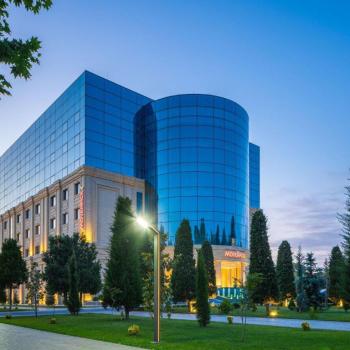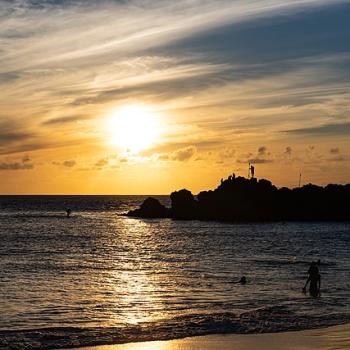
The numbers need updating, of course, as do some other elements of the article, but the basic point of this column, which I published in the Provo Daily Herald back in 1999, not long after a trip to South America and another to southern Mexico and Guatemala, still holds:
While many in the United States continue to think of Latin America as almost uniformly Roman Catholic, this is no longer true (if it ever really was). The religious situation south of the U.S. border is far more complex than stereotypes would suggest. In fact, a religious revolution is underway in the Spanish- and Portuguese-speaking nations of this hemisphere—one of the most momentous in recent history.
Protestant seminaries dot the region. Virtually every village in the Guatemalan lowlands boasts an evangelical or Pentecostal church—or both. Maya Indians, newly militant, dissatisfied with centuries of rule by descendents of their conquerors, gather among the ancient temples of Tikál to perform their own rituals. Along the road from Guatemala City to the nation’s old colonial capital, Antigua, faithful Muslims are summoned to prayer five times daily from the minaret of a mosque.
An even more prominent mosque, white, with two minarets, is a leading landmark in the Brazilian provincial city of Foz do Iguaçu, located near the borders of Paraguay and Argentina. Not far from the ruins of the eighteenth century Jesuit settlements that inspired the Robert DeNiro film The Mission, Foz do Iguaçu boasts a population of at least 16,000 Muslims, or roughly five percent of its population. Perhaps owing to their ethic of hard work and mutual assistance, they are disproportionately visible and influential and a visitor can hardly miss their presence. Billboards throughout the area advertise “Textil Osman,” the “Aladdin” and other Arabic restaurants, “Estambul” carpets, the “Fouad Center,” and the “Villa Hijazi.” At least two local cable channels steadily broadcast Arabic programs.
Along the road out of the city toward the spectacular waterfalls of Iguaçu and their surrounding subtropical rain forest, an Adventist Christian camp sits very close to a large Muslim social club. On another road out of the city, toward the vast Itaipú hydroelectric complex (the largest in the world), Protestant billboards summon drivers to accept Jesus. Nearby, a small white Mormon chapel offers a different vision of Christianity. Almost 300,000 Mormons currently reside in Sao Paulo, Brazil, which has the largest population of Latter-day Saints in a single city outside of Utah.
In Lima, Peru, the Mormons have a temple and a large missionary-training complex. A “Templo Adventista” stands not far from a very modern Catholic church in the fashionable Lima suburb of Miraflores, which has been brilliantly chronicled in the novels of Mario Vargas Llosa. In the Peruvian Andes, devotees of the “New Age” and the “Goddess” gather at the breathtaking Incan ruins of Machu Picchu.
Centuries of close association between the hierarchy of the Catholic Church in Latin America and the region’s conquerors, rulers, and privileged classes have tainted Catholicism in many minds. Additionally, the complacency that sometimes afflicts monopolies seems to have left its leaders ill prepared for competition. Only in recent years, it seems, have many of the bishops and priests awakened to the risks of their new situation.
The small nation of Uruguay has a strong tradition of secularism and of the separation of church and state. The Roman Catholic church enjoys no role in the government, and even the most sacred of holidays have officially secular names. Thus, for example, Christmas is “Family Day” and the week of Easter is “Tourism Week.” The journalist and two-time Uruguayan president José Batlle y Ordóñez (d. 1929), European educated and saturated with “progressive” ideas, insisted that the word Dios (“God”) be spelled with a small “d” in his newspaper, and prohibited naming buildings after saints.
Today, many Uruguayans believe that all religions are equal. And the religious variety of their country reflects that belief. In the poor suburbs of Montevideo, the capital, one sees small Santería sanctuaries. Downtown, many of the shopkeepers and street vendors are Jewish. An impressive new building complex belonging to the Jehovah’s Witnesses graces one area of the city, while the Mormons are building a new temple in one of its nicer suburbs. Traveling along the Avenida Italia, one of the city’s main thoroughfares, one sees a small meeting hall of the Church of the Nazarene only a few blocks beyond a large neon sign that advertises the Nicheren Buddhist organization Soka Gakkai.
Latin America is being transformed.












